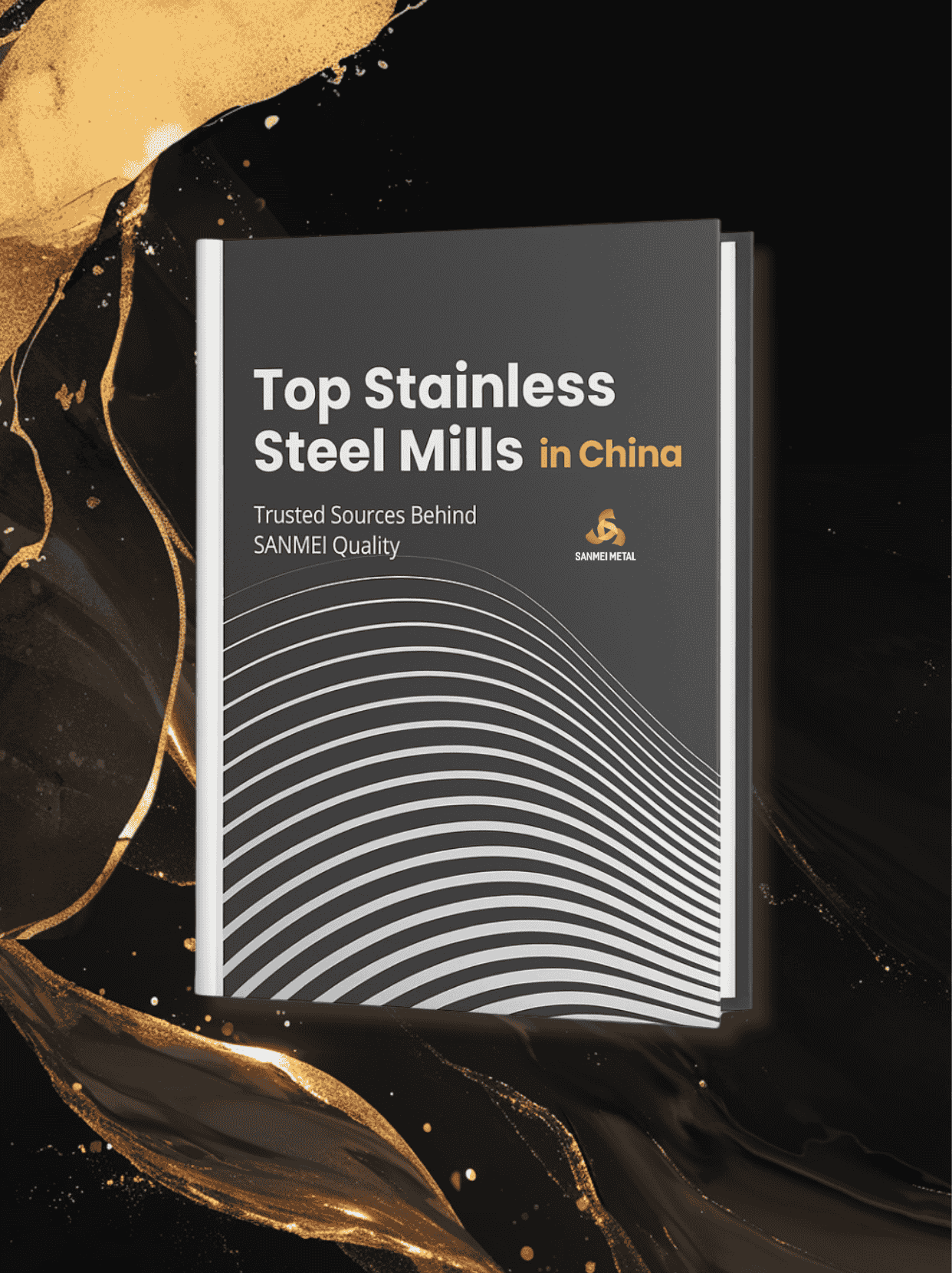
인증 식품 등급 스테인리스 스틸 | SANMEI 공급업체

왜 식품 등급 스테인리스 스틸을 사용해야 할까요?

우수한 내식성 오염을 방지하기 위해

비반응성 산성, 짠맛 또는 뜨거운 음식과 함께

매끄럽고 깨끗이 청소 가능한 표면 위생 기준을 위해

고온 내구성 요리 환경을 위해
식품용 스테인리스 스틸의 응용 분야
냄비, 토스터, 그릴과 같은 스테인리스 스틸 조리 장비는 주로 무독성이어야 하며 식품 접촉에 안전해야 합니다. 또한, 내식성, 고온 내성, 세척 및 유지 관리의 용이성과 같은 성능 요인은 고품질 주방용품에 매우 중요합니다.
304, 304L, 316, 316L, 321, 309S 및 310S 스테인리스 강철 등급은 고온 환경에서도 뛰어난 성능을 유지하고 녹이 슬지 않는 것으로 알려져 있어 다양한 조리 장비 제조에 이상적입니다.
- 304, 304L: 이러한 등급은 뛰어난 내식성과 내열성을 제공하여 스테인리스 스틸 냄비, 토스터, 커피 메이커, 그릴, 스팀 바구니, 프라이팬, 블렌더, 바비큐 그릴, 오븐 제조에 널리 사용됩니다.
- 316, 316리터: 이러한 등급은 염분이 많은 환경에서 더 나은 내식성을 제공하므로 짠맛이나 산성 음식과 접촉하는 스테인리스 스틸 주방용품에 적합합니다.
- 430: 430 스테인리스 스틸은 성형성과 산화 저항성이 뛰어나 냄비와 기타 조리 도구를 만드는 데 일반적으로 사용되지만, 내식성은 304보다 약간 낮습니다.
- 321: 티타늄이 함유된 321 스테인리스 스틸은 우수한 내식성 및 내산화성을 제공하며, 특히 냄비, 베이킹 트레이, 오븐과 같은 고온 환경에 적합합니다.
- 309S 그리고 310S: 이 등급은 고온 산화 저항성이 뛰어나 오븐이나 BBQ 그릴과 같은 고온 환경에 적합합니다.
스테인리스 스틸 주방 가구와 가전제품은 내식성과 고강도에 대한 요구 사항을 충족해야 할 뿐만 아니라 전시 가구로서 미적으로도 만족스러워야 합니다. 또한 기름이 가득한 주방 환경에서는 쉬운 청소와 유지 관리가 필수적입니다.
304, 304L, 409, 430, 2205, 2207, 436, 439 및 441 스테인리스 강철 등급은 내식성, 기계적 특성이 뛰어나고, 매력적인 외관을 유지할 수 있어 주방 가구 및 가전제품 제조에 적합합니다.
식품 보관 용기와 도구에 사용되는 스테인리스 스틸은 식품과 반응해서는 안 됩니다. 또한 이러한 용기는 일부 식품의 첨가물로 인해 높은 내식성이 필요합니다. 이러한 소재의 경우 세척이 쉽다는 것도 큰 장점입니다.
칼과 식기에 사용되는 스테인리스 스틸은 경도와 내마모성이 좋아야 하며, 특히 칼의 경우 경도와 강도가 높아야 합니다. 현대 소비자에게 칼과 식기는 단순한 용기가 아니라 컬렉션의 미적 매력을 높여주는 장식 아이템이기도 합니다.
식품 등급 스테인리스 스틸에 대해 제공하는 등급
| 등급 | 주요 기능 및 응용 프로그램 |
|---|---|
| 201 시리즈(J1~J4) | 비용 효율적인 단기 식품 접촉 용기 |
| 304 / 304L | 식품 등급 사용을 위한 산업 표준, 내식성 및 내열성 |
| 316 / 316리터 | 산성, 염분, 해산물 가공에 고성능 |
| 321 / 309S / 310S | 고온 내구성으로 산업용 오븐 및 BBQ에 적합합니다. |
| 409L / 410 / 410S | 내구성, 내마모성이 뛰어나 칼과 칼붙이에 적합합니다. |
| 420J1 / 420J2 | 절삭 공구 및 주방용품에 적합한 높은 경도 |
| 430 / 436 / 439 / 441 | 성형성과 비용 효율성이 우수하여 가정 주방에서 널리 사용됩니다. |
| 2205 / 2207 | 혹독한 가공 환경을 위한 듀플렉스 강철, 뛰어난 강도와 내식성 |
우리는 인증된 식품 등급 스테인리스 스틸 제품을 공급합니다
SANMEI에서는 코일과 시트 형태로 2B, BA, No.4, HL, 미러 광택과 같은 표면 마감을 갖춘 인증된 식품 등급 스테인리스 스틸을 제공합니다. 이는 주방 장비, 가전제품, 식품 가공 라인에 이상적입니다.
하지만 구매하는 제품이 정말 식품 안전에 안전한지 어떻게 알 수 있을까요? 중국처럼 재료 기준이 다양한 시장에서는 원산지를 확인하는 것이 매우 중요합니다. 👉 중국에서 구입하는 식품 등급 스테인리스 스틸이 정말 식품 등급일까요?
가이드를 읽고 확인해야 할 사항과 올바른 공급업체를 선택하는 방법을 알아보세요.







